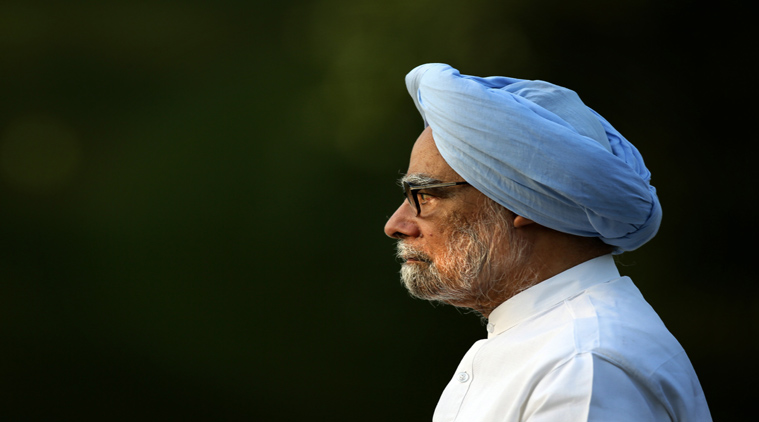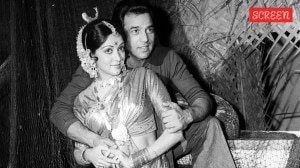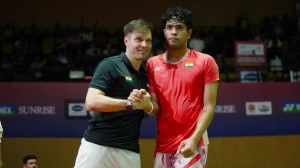Manmohan Singh interview: Indian industry is much more confident, they are the children of 1991 reforms
Dr Manmohan Singh on his experiences of undertaking the crucial reforms that opened up the economy in 1991, and the 1991-92 budgets that he presented as finance minister.
 Dr Manmohan Singh talked about how he feels India continues to be trapped in the belief that action should be taken in the face of a crisis, and after that it is status quo.
Dr Manmohan Singh talked about how he feels India continues to be trapped in the belief that action should be taken in the face of a crisis, and after that it is status quo.
Today marks 25 years since Dr Manmohan Singh, then Finance Minister, presented the Budget for 1991, undertaking further reform measures after the opening of the economy with the devaluation of the rupee on July 1, 1991. The former prime minister, in a rare conversation with The Indian Express earlier this year, said he does not see much originality in the reforms that he, working with Prime Minister PV Narasimha Rao, had set in motion. They were ideas, he said, that were being discussed both inside and outside the government, and when the opportunity arose, he put them together.
In a crisis, constructive steps are taken, but when it is over, status quo takes over, said Dr Singh. But it is remarkable that even if the process was put in place by a Congress-led government, the next United Front government, led by HD Deve Gowda and IK Gujral, carried forward the process. In fact, P Chidambaram presented what came to be known as a ‘dream budget’. Then came the BJP government which also continued the reform process.
The interview, which you can read here, is part of an Indian Express Series on 25 years of economic reforms. July marks the 25th year of the historic reforms that set in motion the irreversible process of opening the Indian economy. You can read our entire coverage of the series, here.
Dr Singh shared his experiences of undertaking the crucial reforms that opened up the economy in 1991, and the 1991-92 budgets that he presented as finance minister. Below are the key issues Dr Manmohan Singh spoke to The Indian Express about.
Legal status for SEBI
Until the Budget for 1991, the Securities and Exchange Board of India had only been an advisory body. In the 1991 Budget, it was granted legal status and statutory powers to regulate the country’s capital markets. It also abolished the Controller of Capital Issues.
Tax reforms
The 1991 Budget removed wealth tax, so the children of those who had wealth could put money honestly into their enterprises.
It introduced tax deducted at source on bank deposits and commissions. The Budget announced tax incentives for service exports. The corporate tax rate was also increased from 40 per cent to 45 per cent; income tax slabs however were kept unchanged.
Raja Chelliah was appointed to work on tax reforms, but that could not be done in a month, so by the time the second budget was presented in 1992, Chelliah’s recommendations were incorporated.
VAT was introduced in the Budget of 1992, the following year. This budget also saw the process of reducing customs duties.
Narasimham Committee on financial sector reforms
The banking system needed reforms and the 1991 Budget announced the setting up of the Narasimham committee on financial sector reforms. Up until the appointment of this committee, the government had a relatively vague idea about the banking reforms that were to be implemented.
Relationship with RBI
Dr Singh who had himself been the RBI Governor for two and a half years between 1982 and 1985, said there have always been differences between the finance minister and the RBI governor. But in his time as the finance minister, the relationship between Rangarajan and him were smooth, partly because they had known each other for close to 25 years. While Dr Singh was finance minister, a historic agreement had been reached with the RBI to do away with automatic monetisation of the deficit. Rangarajan wanted it and Singh supported him, and this ensured that financial policy was supportive of what the government wanted to do.
National Stock Exchange
The National Stock Exchange was strongly opposed by Bombay stockbrokers and captains of industry.
The Bombay Club and traditional industrialists were opposed to it. A number of people had to be talked to – industry, politicians, people in state governments. Dr Singh talked to the press also often then, and slowly managed to overcome the resistance. In the very first week itself, there was opposition to the reforms agenda. But he managed to secure the support of PN Dhar, KN Raj, IG Patel and RN Malhotra, and they came out with a statement supporting the reform process.
Exchange rate management
There was a lot of speculation about the future of the rupee, Dr Singh said, and had they not acted creatively then, the entire system would have had to face the impact. Exchange rate adjustment was done in two steps, Singh explained, the first was to test the waters and gauge what the public reaction would be, the reaction within the government and the reaction from the opposition. They faced opposition from the then RBI Deputy Governor C Rangarajan as well.
Prime Minsiter Narasimha Rao too had doubts about the second installment of the exchange rate adjustment and had in fact asked Singh to halt it. When Singh called Rangarajan however, the announcement of the new exchange rate had already been made and that was the end of it. It wasn’t a formal devaluation but a market-driven adjustment.






- 01
- 02
- 03
- 04
- 05
























